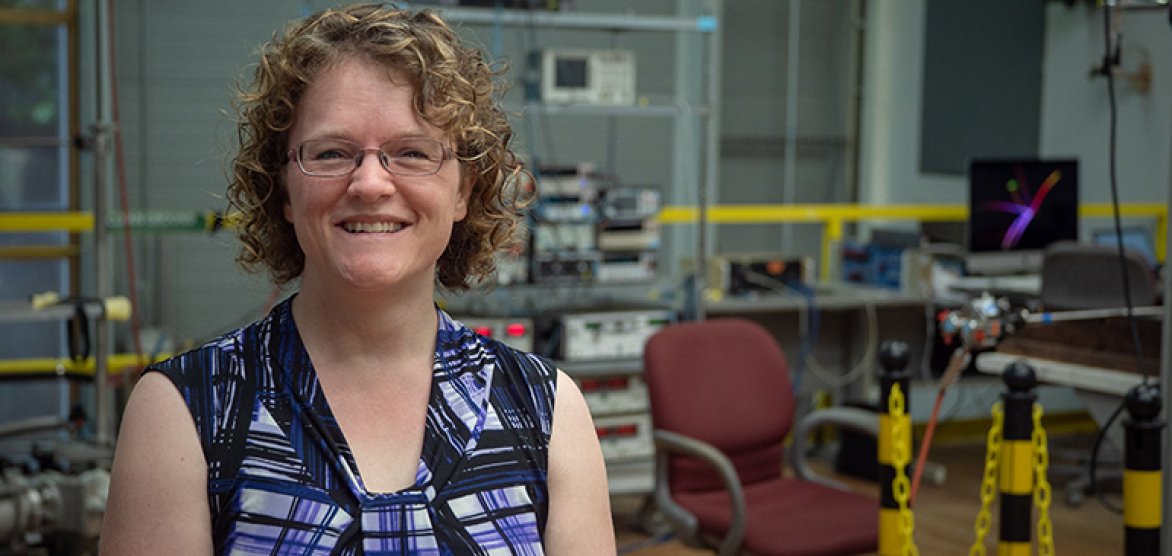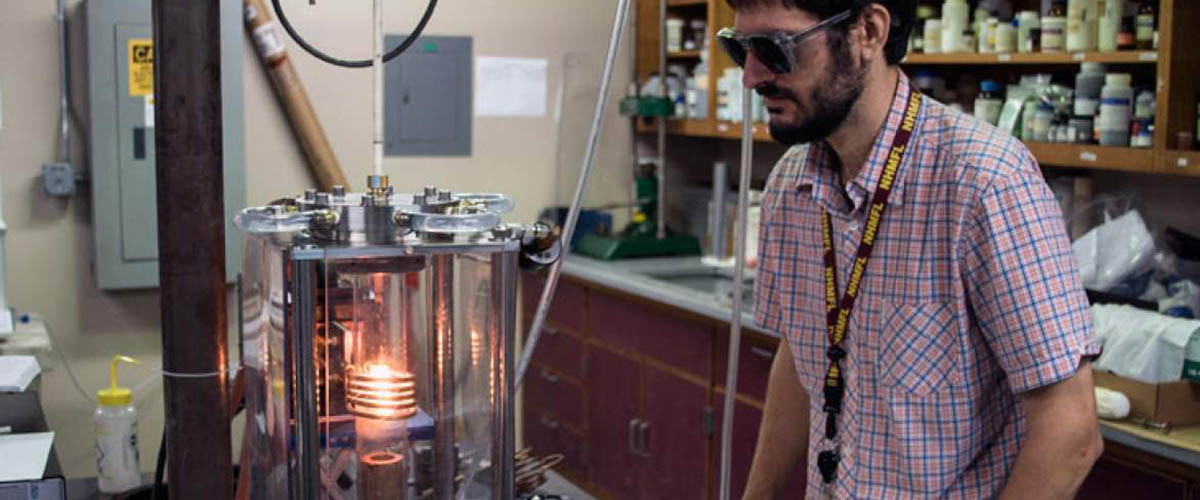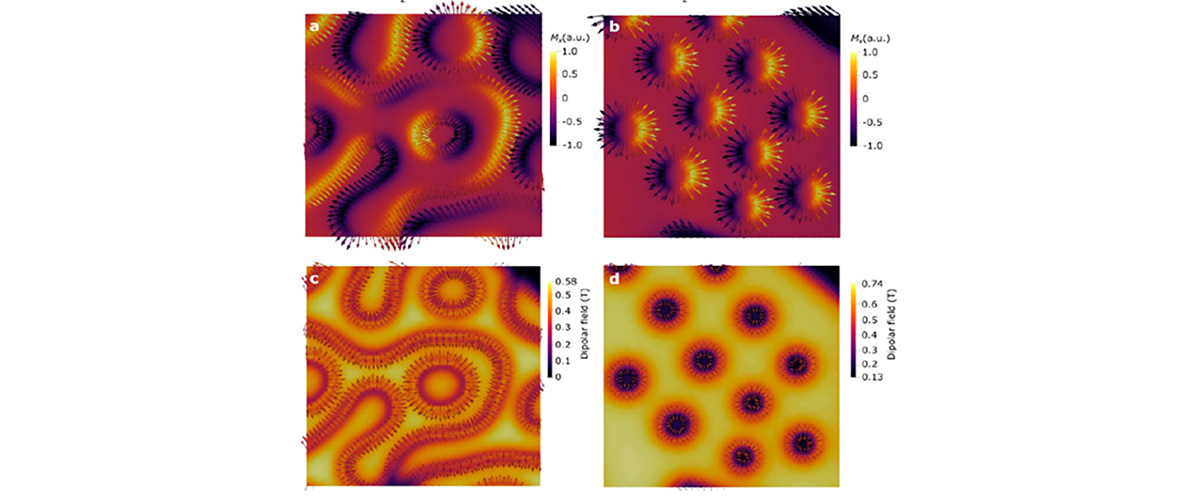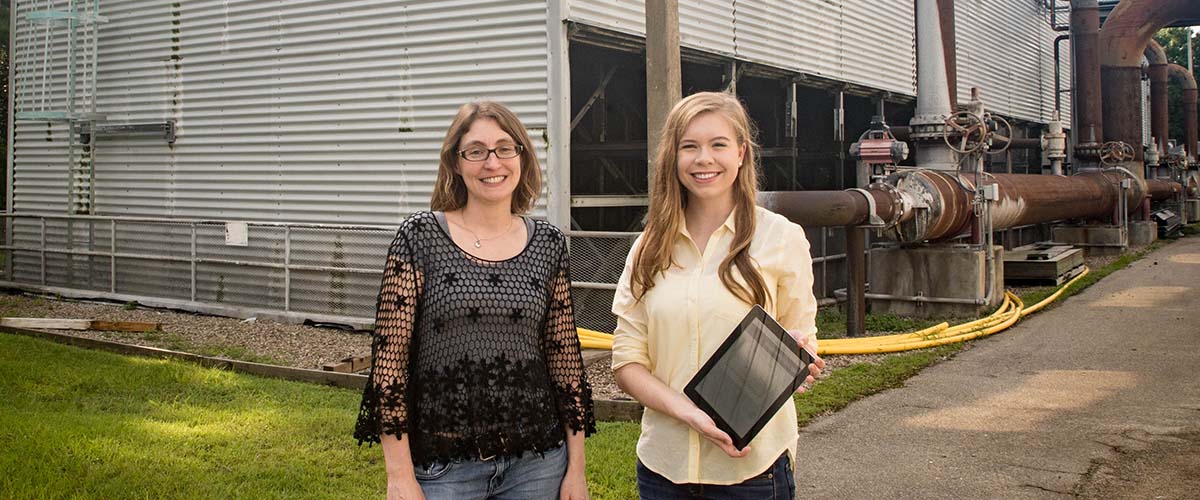Christianne Beekman wants you to know that electrons are no one-trick ponies. Sure, we all know they can move from point A to point B when nudged by a voltage, a handy talent we rely on to power our appliances and electronics.
But electrons can also twirl and flip, a magnetic property physicists call "spin" or "magnetic moment." It's not quite the same as a ballerina executing a pirouette, but the image is nonetheless useful for grasping this quantum concept.
Beekman, a researcher at the National MagLab and assistant professor at Florida State University’s Department of Physics, is pretty excited about spin. If we can harness it, in the way we once learned to generate and control current, that knowledge will transform our world even faster and more radically than did electricity and semiconductors.
Beekman studies exotic kinds of magnets she thinks could move us closer to that goal. And the National Science Foundation (NSF) has just given her a big boost with a five-year, $500,000 CAREER Award. She is one of two MagLab scientists to receive the prestigious accolade (chemist Yan-Yan Hu was also honored) , which is given to scientists who are still relatively early in their careers.
"I'm very happy that I get to do the research that I wanted to do — and get paid for it," laughed Beekman. "It's a relatively underexplored area of research."
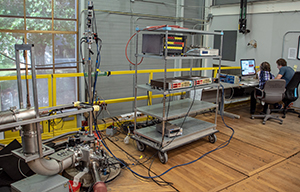
Christianne Beekman at work in the MagLab's Millikelvin Facility.
Many physicists have been doing research that, experiment by experiment, is gradually paving the way to the quantum computers and related applications that Beekman envisions. But Beekman and her group are among the first to manipulate a class of materials called spinel vanadates in a special way that results in intriguing behaviors that, she said, could move scientists a good piece down the road.
Spinel vanadates are a kind of complex oxide, molecules that have intricate lattice structures. Other scientists have studied these particular crystals and how their electrons behave under different conditions. But Beekman's group has taken these studies a step further. By growing versions of the stuff as thin as 5 nanometers (the width of two human DNA strands), they created a whole new quantum world.
"It was a completely different, unexpected structure that we got — just by growing a thin film. Nobody had ever done it. Nobody had ever looked," Beekman said. "And we significantly altered the magnetic and electronic properties of this material."
Like most "thin films," these boast properties different than those of its parent crystal. In fact, Beekman's experiments have shown that the properties of the thin film she created are a lot different. Confined to a 2D plane, the magnetic moments of the electrons in the film behave in a different way. Just as importantly, she can manipulate this new system in a way that is not possible with 3D materials.
It's like atomic-level engineering. By tweaking the positions of atoms, Beekman changes the material's overall spin, which can in turn change the material's magnetic behaviors and properties. Beekman gleans information on the material by exposing it to very low temperatures and high magnetic fields and seeing what happens in those extreme environments. Neutron scattering experiments done at other national laboratories and a measuring technique developed in her group called capacitive torque magnetometry help her further understand the materials.
In the longer term, Beekman hopes to get to a point where she can design a thin-film material with a specific property in mind.
High magnetic fields are critical to Beekman's work: She can change the strength and direction of the field to cause some of the electrons in the system to flip in a different direction, which can instigate a chain of interactions among electrons that reverberates throughout the system. That kind of behavior can potentially be leveraged for next-generation information technologies.
When a magnetic field forces an electron spin to flip, this system doesn't like it: Physicists even call this phenomenon "frustrated magnetism."
"So it's going to try to rearrange itself in these particular systems to fix that issue," Beekman explained, diving into the physics. "And in fixing it, you're going to have an effective magnetic current running through the crystal in order to solve the problem of this one flipped spin. If you flip more, then the problem becomes more severe. So now I have managed to effectively create a magnetic current in the sample. If I can have that, and control where it goes, I can actually use my spin as an information carrier. And that opens up applications in things like quantum computers.
"That's where I want to go," Beekman added, "but that's a hard problem."
But bolstered by her new NSF award, she is eager to wrestle with it. "We don't know if thin films are feasible for applications," Beekman said. "I'm hoping to get closer to answering that question — whether that's a positive or negative answer — in the next five years."
For more information on Beekman's recent research in this area, read Spin canting and orbital order in spinel vanadate thin films in Phys. Rev. Materials (October 2018).
Story by Kristen Coyne



